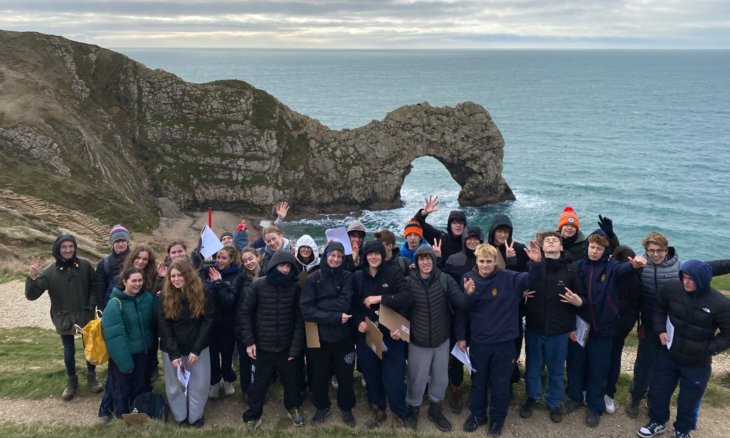
The Lower Sixth geographers enjoyed a fabulous four days in Dorset this week, staying at the wonderful Leeson House Field Studies Centre in Swanage. Pupils were introduced by expert tutors to a plethora of new investigation techniques, whilst visiting the unique and awe-inspiring Jurassic coastline and its surrounding towns.
On the first day, pupils visited Boscombe, home to a successful multi-million-pound seafront regeneration project, including beach BBQs, bouldering facilities designed in the shape of the coastline, and a revamp of the stunning original pier, dating back to 1889. They enjoyed the brief sunshine and some hot drinks whilst
completing human geography techniques, including non-participant surveys (affectionately known as people-watching) and environmental quality surveys.
On day two, pupils headed to the village of Corfe Castle to investigate the changes witnessed by the area as tourism has increased. They delved into methods designed to record the evolving character of the area and evaluated whether their own media perceptions of the village lived up to their “real life experience”. The afternoon saw pupils visiting Studland’s honeypot site of Knoll Beach, which has operated as a sacrificial area to protect other areas of this depositional coastline. They studied plant succession moving inland and enjoyed a gorgeous sunset before heading back to the centre to be introduced to statistical mathematics to test their findings.
Our final day was spent investigating carbon storage and water systems in nearby Langton Woods, a pocket of ancient woodland being carefully managed by its custodians. Pupils measured the carbon content of trees and infiltration capacity of the ground and were treated to a little bit of woodland tree bathing and plant spotting.
On the final morning, pupils took in the breathtaking sights of Man O’ War Cove, Durdle Door and Lulworth Cove, considering how they could measure beach morphology and changes in the beach over time and space.
The pupils returned to the College brimming with ideas for their own independent investigations, which they will conduct over the summer term and holidays. They also relished the opportunity to bond as a year group of keen geographers, enjoying downtime activities of pool, round the world ping pong, and marshmallow toasting on a spectacular bonfire on our final evening.
